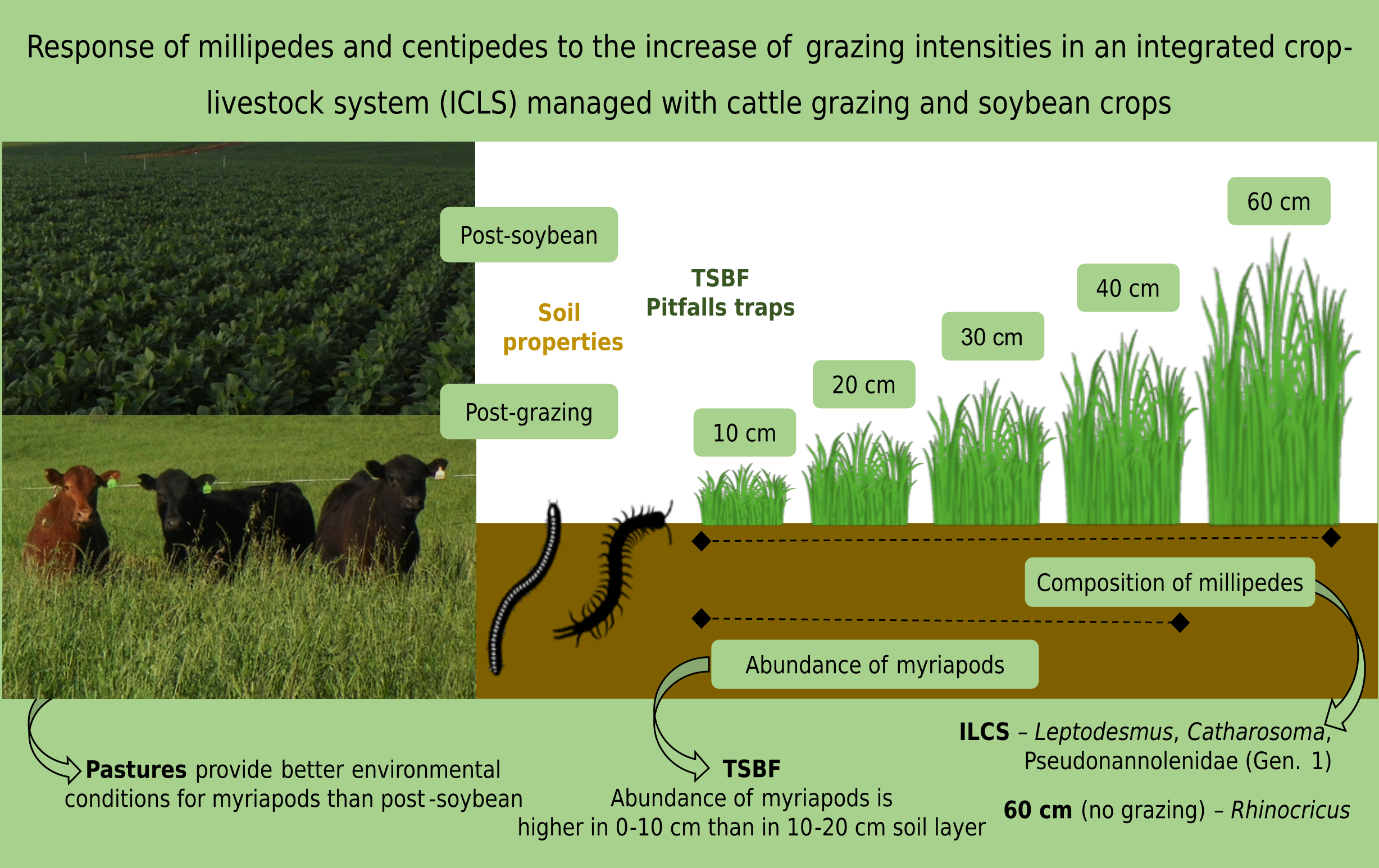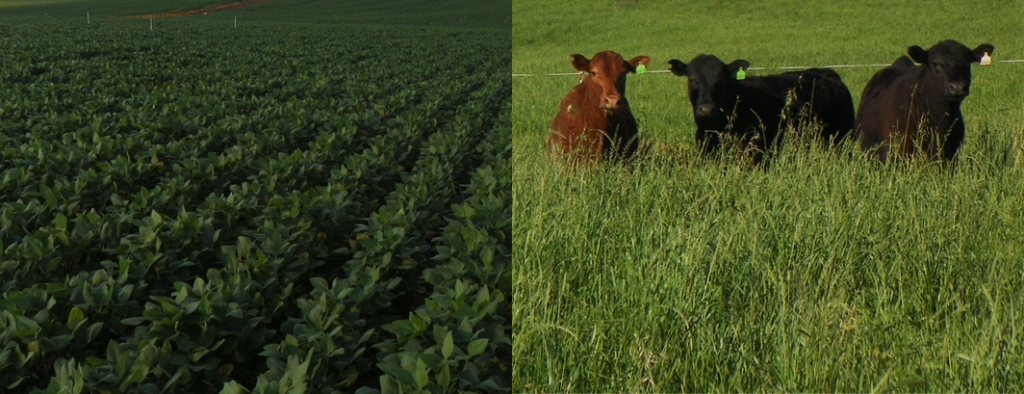Rev. Bras. Ciênc. Solo.2025;49:e0240114.
How do centipedes and millipedes respond to grazing intensity in an integrated crop-livestock system with soybean-pasture succession?
16/Jun/2025
DOI: 10.36783/18069657rbcs20240114
Graphical Abstract

Highlights
The abundance of myriapods is higher in 0-10 cm than in 10-20 cm soil layer;
Lower grazing intensities benefit soil centipedes and millipedes communities;
Post-grazing provides better environmental conditions for myriapods than post-soybean;
Genera Leptodesmus and Catharosoma occur in 30 and 40 cm grazing;
Genus Rhinocricus occurs only in no grazing areas (60cm).
ABSTRACT
Centipedes and millipedes promote important functions in the ecosystem. However, land use intensification in agricultural areas can reduce the abundance and diversity of these organisms. To understand the effect of grazing intensification on communities of centipedes and millipedes, we sampled these organisms in an integrated crop-livestock system (ICLS) experiment, cultivated for 13 years with soybean (Glycine max) in the summer and black oat (Avena strigosa) + Italian ryegrass (Lolium multiflorum) for cattle grazing in the winter. Treatments consisted of different grazing intensities defined by sward heights of 0.10, 0.20, 0.30, and 0.40 m under continuous stocking, and control paddocks (no grazing). We used monoliths to collect centipedes and millipedes in the 0.00-0.10 and 0.10-0.20 m soil layers, and pitfall traps to collect specimens on the soil surface. Samplings were conducted for two years at two distinct moments of the ICLS: immediately after cattle removal from the pasture in 2014 and 2015 (post-grazing), and after soybean harvest in 2015 and 2016 (post-soybean). To evaluate the composition of millipede community, an extra sampling was performed with pitfall traps in 2018 (post-grazing). A total of 498 centipedes and 217 millipedes were collected during the two methods. We observed a greater abundance of centipedes and millipedes in the post-grazing environment and at lower grazing intensities in the 0.00-0.10 m soil layer. No significant effects of sward height were observed on centipede and millipede abundance in the 0.10-0.20 m soil layer or in the sampling with pitfall traps. Millipedes of genera Catharosoma, Leptodesmus, and organisms of the Pseudonannolenidae family occur in the integrated crop-livestock system, and Rhinocricus and Catharosoma in no grazing pastures. Moderate to light grazing intensities (0.30 m sward height) promote soil centipede and millipede communities with animal and soybean production in the integrated crop-livestock system, aligning sustainable intensification to food production.
125

